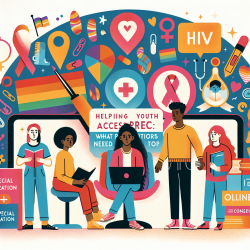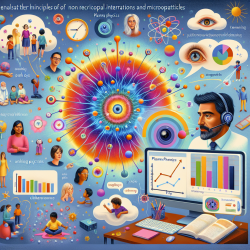Introduction
In the evolving landscape of healthcare, the inclusion of gender-affirming care in health science curricula is not just a progressive step but a necessary one. The research article titled Debate: Why should gender-affirming health care be included in health science curricula? highlights the critical need for educational reform to address the unique healthcare needs of trans and gender diverse (TGD) individuals. This blog will explore the key findings of the research and offer actionable insights for practitioners to enhance their skills and knowledge in providing gender-affirming care.
The Importance of Gender-Affirming Care
Gender-affirming care is a holistic approach that respects and affirms an individual's gender identity while addressing their physical, mental, and social health needs. This care model moves away from pathologizing gender diversity and instead focuses on providing an affirming experience in all healthcare encounters. The article underscores the significant health disparities faced by TGD individuals, often stemming from discrimination and systemic biases in healthcare settings.
Gaps in Current Health Science Curricula
The research identifies substantial gaps in health science curricula concerning gender-affirming care. Many healthcare professionals report feeling unprepared to provide appropriate care to TGD individuals due to inadequate training. This lack of preparation contributes to the ongoing marginalization and discrimination experienced by TGD patients in healthcare settings.
Educational Interventions and Ethical Imperatives
To bridge these gaps, the article suggests specific educational interventions aimed at improving awareness, knowledge, and skills related to gender-affirming care. These interventions include integrating gender-affirming care into health science curricula and adopting the informed-consent model, which empowers patients to make their own healthcare decisions. This model contrasts with the traditional gatekeeping approach, which can limit access to necessary care.
Actionable Steps for Practitioners
- Engage in continuous education on gender-affirming care through webinars, workshops, and conferences.
- Advocate for the inclusion of gender-affirming care in health science curricula within your institution.
- Implement the informed-consent model in your practice to enhance patient autonomy and care quality.
- Network with other healthcare professionals to share best practices and resources on providing gender-affirming care.
Conclusion
Incorporating gender-affirming care into health science curricula is not only an ethical imperative but also a step towards reducing healthcare disparities for TGD individuals. Practitioners are encouraged to actively seek out educational opportunities and advocate for curriculum changes to better serve this marginalized community.
To read the original research paper, please follow this link: Debate: Why should gender-affirming health care be included in health science curricula?










